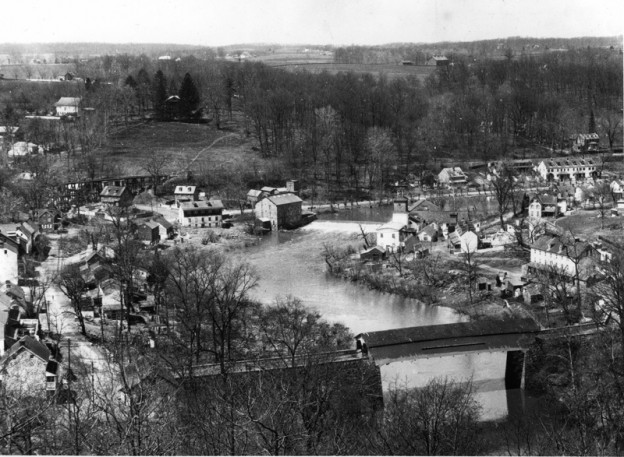The goal of Delaware’s Industrial Brandywine is to document all known businesses that existed along the Brandywine River in Delaware.

The significance of the Brandywine in Delaware is best described in two quotes sources in the Hagley Library.
In his book Alfred I du Pont: The Man and his Family Joseph Frazier Wall provided this overview of the Brandywine:
"Although the Brandywine is short and lacks deep, navigable waters, it has other assets of inestimable value. Originating within the Welsh Hills of southeastern Pennsylvania, it flows quietly across the fertile Great Valley that lies between the Schuylkill and Susquehanna rivers, a pleasant gentle stream that complements the rich pastoral scenery of the many Quaker farms that border it."
"Then, just as it crosses the state line into Delaware and, as if nature had intended a boundary line to be placed there, it strikes a range of igneous granite called gabbro. It has dug a channel through this hard rock, and in less than four miles it descends 120 feet, in a mad rush to the Delaware River and on out to the sea. No industrial planner could have designed a better terrain for eighteenth-century industry, for the river has its fall line immediately above its broad, sluggish estuary. This felicitous union of fall-line power and tidewater transportation within a stretch of only four miles was highly attractive to the proto-industrialists of the eighteenth century…"
"…For eight miles in Delaware water power was at its best, easily channeled into millraces and always ready to turn lathes, spin wheels, and revolve grindstones. Just below the so-called Great Falls, where the Brandywine met the sluggish Christina River to flow into the broad Delaware, lay the port of Wilmington, with its cargo vessels ready to take the barrels of flour, the bolts of cloth, and the rolls of paper to the markets of the world.”
An 1818 petition titled “Memorial of the Brandywine millers opposing the altering of mill dams to permit fish to go over them” found in the Delaware State Archives offers this perspective from those who operated along the river in the early 19th century:
“The utility and magnitude of the Mills and Works upon the Brandywine are not more celebrated than felt in every part of the United States, and the trade, industry, and importance of the State of Delaware are greatly dependent upon their prosperity. The Farmer, as well as the merchant and mechanic, in every part of the State, have an interest in facilitating these operations, and would sensibly feel any blow which might interrupt their business.” [Quoted in: Hagley Research Report: The Brandywine Mills, 1742-1815]
If you would like to learn more about the primary and secondary sources at the Hagley Library, please contact us research@hagley.org

